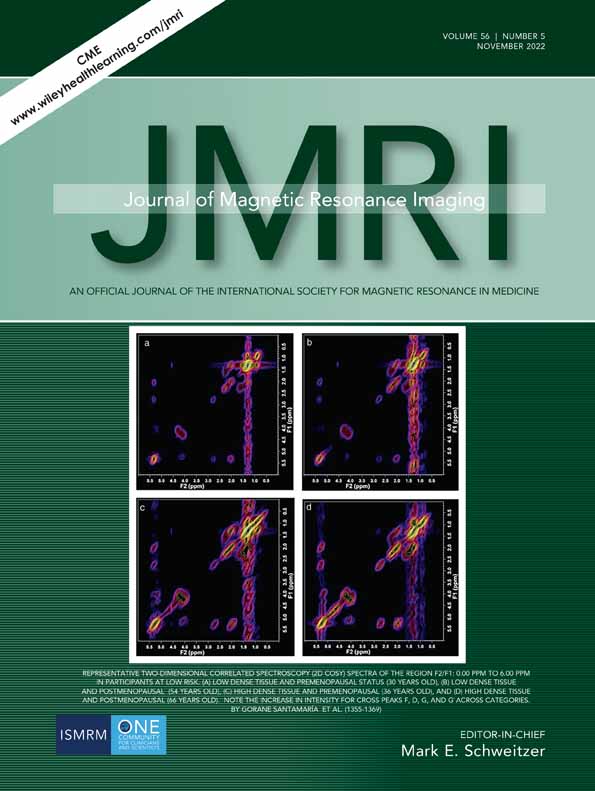Synthetic Time of Flight Magnetic Resonance Angiography Generation Model Based on Cycle-Consistent Generative Adversarial Network Using PETRA-MRA in the Patients With Treated Intracranial Aneurysm
Sung-Hye You and Yongwon Cho contributed equally to this work.
Abstract
Background
Pointwise encoding time reduction with radial acquisition (PETRA) magnetic resonance angiography (MRA) is useful for evaluating intracranial aneurysm recurrence, but the problem of severe background noise and low peripheral signal-to-noise ratio (SNR) remain. Deep learning could reduce noise using high- and low-quality images.
Purpose
To develop a cycle-consistent generative adversarial network (cycleGAN)-based deep learning model to generate synthetic TOF (synTOF) using PETRA.
Study type
Retrospective.
Population
A total of 377 patients (mean age: 60 ± 11; 293 females) with treated intracranial aneurysms who underwent both PETRA and TOF from October 2017 to January 2021. Data were randomly divided into training (49.9%, 188/377) and validation (50.1%, 189/377) groups.
Field Strength/Sequence
Ultra-short echo time and TOF-MRA on a 3-T MR system.
Assessment
For the cycleGAN model, the peak SNR (PSNR) and structural similarity (SSIM) were evaluated. Image quality was compared qualitatively (5-point Likert scale) and quantitatively (SNR). A multireader diagnostic optimality evaluation was performed with 17 radiologists (experience of 1–18 years).
Statistical Tests
Generalized estimating equation analysis, Friedman's test, McNemar test, and Spearman's rank correlation. P < 0.05 indicated statistical significance.
Results
The PSNR and SSIM between synTOF and TOF were 17.51 [16.76; 18.31] dB and 0.71 ± 0.02. The median values of overall image quality, noise, sharpness, and vascular conspicuity were significantly higher for synTOF than for PETRA (4.00 [4.00; 5.00] vs. 4.00 [3.00; 4.00]; 5.00 [4.00; 5.00] vs. 3.00 [2.00; 4.00]; 4.00 [4.00; 4.00] vs. 4.00 [3.00; 4.00]; 3.00 [3.00; 4.00] vs. 3.00 [2.00; 3.00]). The SNRs of the middle cerebral arteries were the highest for synTOF (synTOF vs. TOF vs. PETRA; 63.67 [43.25; 105.00] vs. 52.42 [32.88; 74.67] vs. 21.05 [12.34; 37.88]). In the multireader evaluation, there was no significant difference in diagnostic optimality or preference between synTOF and TOF (19.00 [18.00; 19.00] vs. 20.00 [18.00; 20.00], P = 0.510; 8.00 [6.00; 11.00] vs. 11.00 [9.00, 14.00], P = 1.000).
Data Conclusion
The cycleGAN-based deep learning model provided synTOF free from background artifact. The synTOF could be a versatile alternative to TOF in patients who have undergone PETRA for evaluating treated aneurysms.
Evidence Level
4
Technical Efficacy
Stage 1
Conflict of Interest
None.




